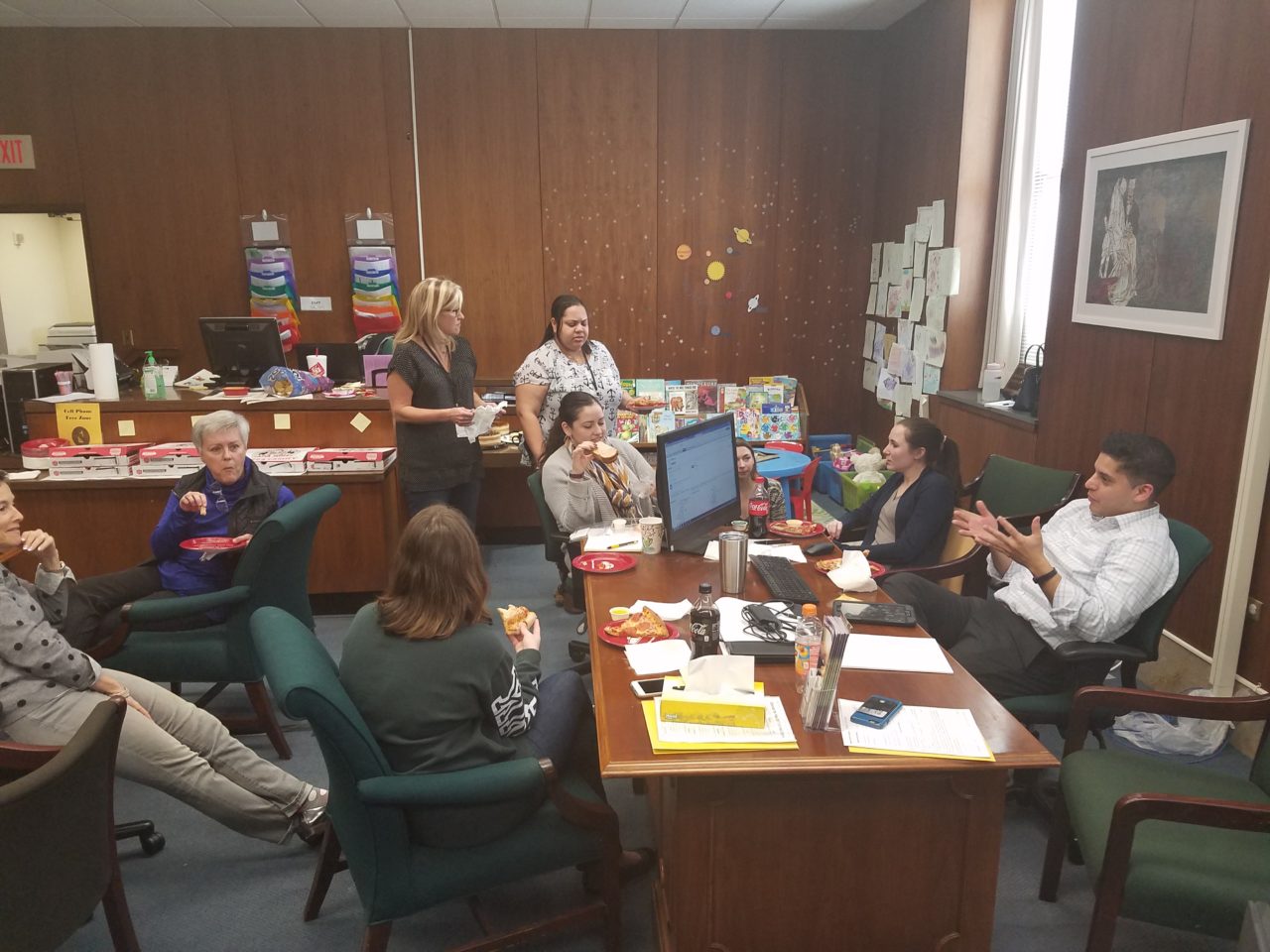If you’ve ever visited the Safe Families Office, you probably noticed a lot of papers moving and pens scratching. When a domestic violence survivor walks through the doors, there is immediately a lot of writing to be done: intakes, histories of violence, petitions, orders, sheriff’s paperwork, and information sheets. The process of speaking to clients prior to their hearings is typically an hour-long one, largely because of the time it takes to hand-write the documents.

Safe Families staff spent the day learning about the new technology they’ll be using.
Thanks to a grant from The AEC Trust and with support from TechBridge, this process will soon change. Starting July 24, the SFO will become completely digital. Each intake desk will be outfitted with a desktop computer, and clients will sign-in on tablets that will process all their information before meeting with an advocate. “We will get real-time data from our clients,” program coordinator Lilli Crowe explained. “This means anyone in the office, anybody in the next year, can see what incidents have happened to be able to cross-reference with anything that might happen in the future.”
Additionally, these developments will streamline the creation of necessary documents, with client information imported directly into the paperwork. While the advocate and client will still review all the documents, these changes will dramatically reduce the time Safe Families staff spend hunched over paper – meaning more face time with clients.
Crowe explained, “Now that we’re not going to be focused on writing, we can focus on the needs of the clients. That might be emotional support, that might be referrals to community resources that focus on a more holistic approach, or that might be safety planning.” Increasingly, AVLF’s ethos is to always ask clients, “What else can we help you with?”
Safe and Stable Families Director Jamie Perez echoed these sentiments: “I am most excited to be able to focus more on what the survivors need in that moment, rather than trying to fill out their paperwork on time and get them into the next hearing.”
In a walk-in clinic, the staff is always looking for more time. And shorter time spent with paperwork and data entry means more clients will be served.

SFO staff enjoys a break after a full-day training learning how to use the office’s technological improvements.
Less time spent in the courthouse is a great benefit to many clients, as well. From start to finish, the process of getting a Temporary Protective Order typically takes three hours, which many survivors do not know or bargain for before walking into the courthouse. Many are unable to take off a full day of work, do not have childcare, or can’t afford to park for an extended period of time. All of these constraints often add to the fear of starting the legal process against their abuser.
“‘I can come back tomorrow’ isn’t always true,” Crowe says. “Being able to reassure our clients that we are able to do things as fast as we can in our office, I think it will greatly increase the number of clients who are able to go through the full process on day one.”
“The advances in technology that are coming into the Safe Families Office in the coming weeks will better address our needs, better address the needs of our clients, and also better address the needs of the court,” Crowe said.
Would you like to read more about the Safe Families Office? Check out our archive on posts about them.

